Sir Sidney Kidman
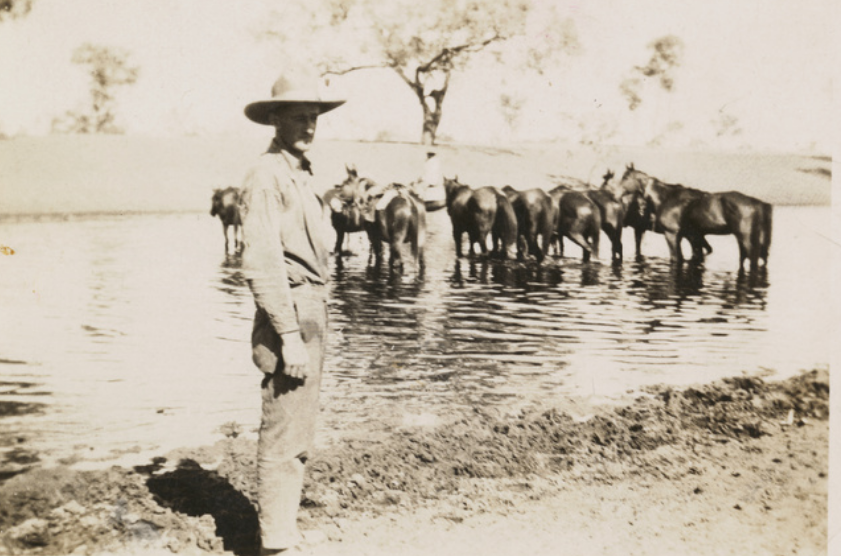
© Janet Lane walers.blogspot.com Image: Jim Kennedy with stock horses of Charlie Paige in a lake formed by overflow from a bore, on Kidman’s property ‘Oringa’ Station (Eringa). 1927. Photo by James J. Kennedy, State Library of S.A.
Sir Sidney Kidman, born in 1857, is the subject of books, as he should be, having worked his way up from nothing to being the biggest landowner in the world. He started a coaching line in partnership with Jimmy Nicholas which broke the monopoly of Cobb and Co – he knew his horses. Soon he got into property.
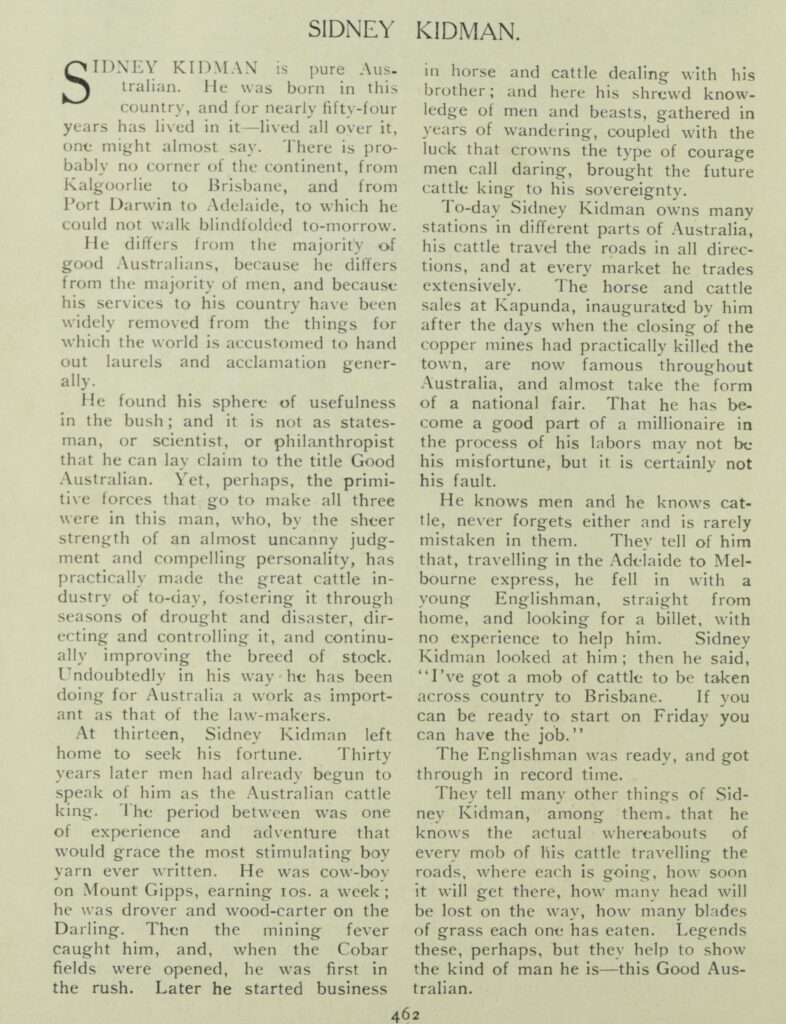
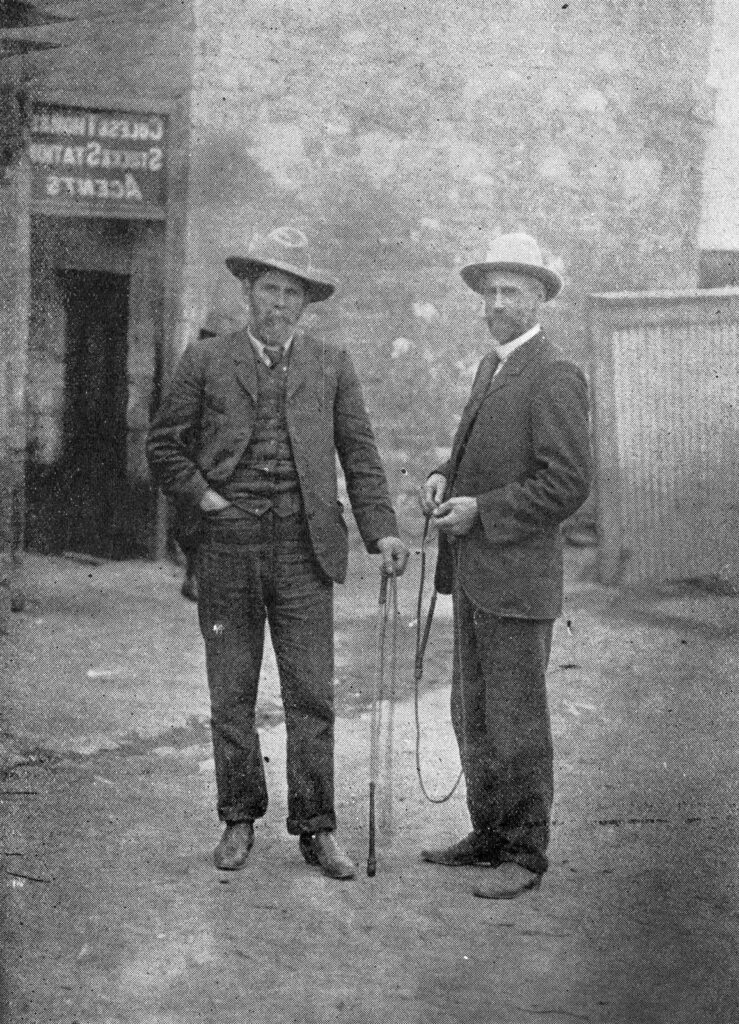
While running coaches in NSW, SA and the NT he bred and bought many coach horses, having up to 1,000 on his runs at any one time. His brother Sackville was in the coach business with him (and cattle). His other brother Charles was too; Charlie went over west and ran the Cobb and Co. there (it had been bought by the Kidman’s) which mostly ran to the goldfields; like Gascard’s horses over west, their horses were known for their hardiness. Then Charlie got into training and owning racehorses which took over as his life’s work. By the end of the 1890’s Sid saw coaches were on the way out as rail took over, and got out of the business.
Sid was a true cattleman and horseman. He harnessed up green horses often on his coach runs, and got them into shape. He’d been around horses all his life. He never raised his voice to horses.
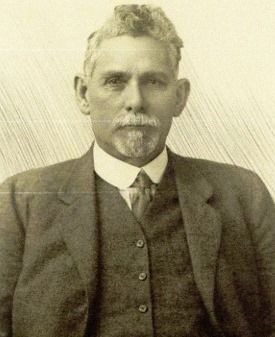
Some of the properties Sid bought had India horses on them, so he decided to see what they were worth. Indeed, he bought Owen Springs solely for its horses. Thomas Elder had put Suffolk Punch stallions on there and good broodmares, to breed up. Sid mustered the lot, 3,000, and sold them for India horses. He started a sale at Kapunda to sell his horses to India buyers and whoever else wanted them. It turned into an annual event and Kidman found good horses could be worth as much as cattle, sometimes a lot more. Of course, he bred hundreds of thousands of cattle, and there was no way that many horses would sell annually, so horses remained a fun sideline that was lucrative – and he had a great social life with the horsemen who came.
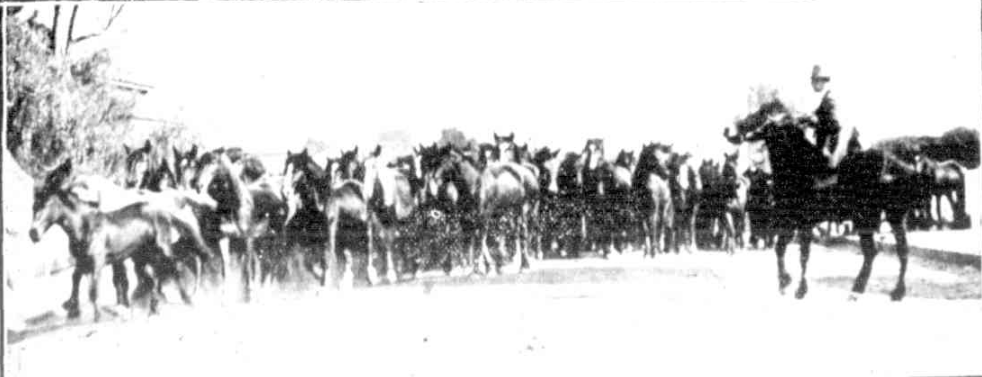
He also sent horses to the Barker Brothers sales, and anywhere horses were sold – sales throughout Queensland, W.A., South Australia, NSW and Victoria. His properties were vast and had countless horses and he cashed them in when-ever he could. He added good blood back to keep up standards.
Kidman was a teetotaller and didn’t smoke or swear. He gave generously to charity but was frugal otherwise. He stood 6 feet tall, and was affable, much respected among bushmen. He sacked anyone who hurt a horse.
He rode tremendous distances to see his property managers on various stations; and put a lot of bores in across country to make stock routes. He used to ride a skewbald pony down the street in Kapunda in the 1880’s, standing on its back, he could make it lie down with a single command, and rise again when he commanded, and he remained standing in the saddle. His cheerful banter at sales was a great attraction and made it a lot of fun. When a weed came in (light sorts) that wouldn’t sell, he’d run around after it, calling out ‘sixpence for charity!’ Several light sorts all named Charity were thus bought cheaply – and he always gave the proceeds to charity. Artillery sorts got top prices.
He made many friends through the horses, and the sales helped the career of many traders. He went to India with them for a jaunt, and improved the horses on several of his stations, getting excellent prices for them at his sales and supplying various orders. He bought Eringa where another Suffolk stallion of Thomas Elders had run, and the horses were extra good.
Image: A hut at Oringa Station 1927, photo by Jim Kennedy, State Library SA.
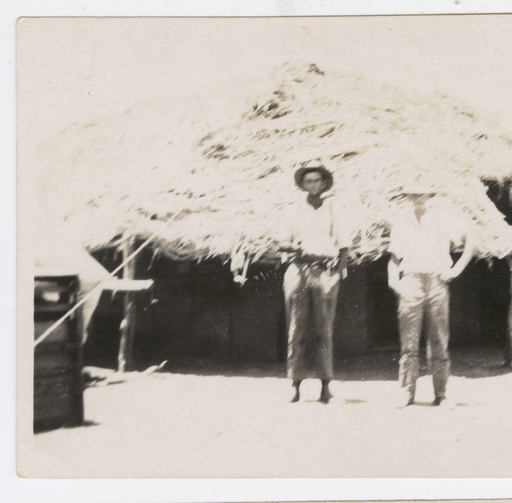
Below images taken approximately 1946, Homestead and Meat House at Eringa Station, National Library of Australia.
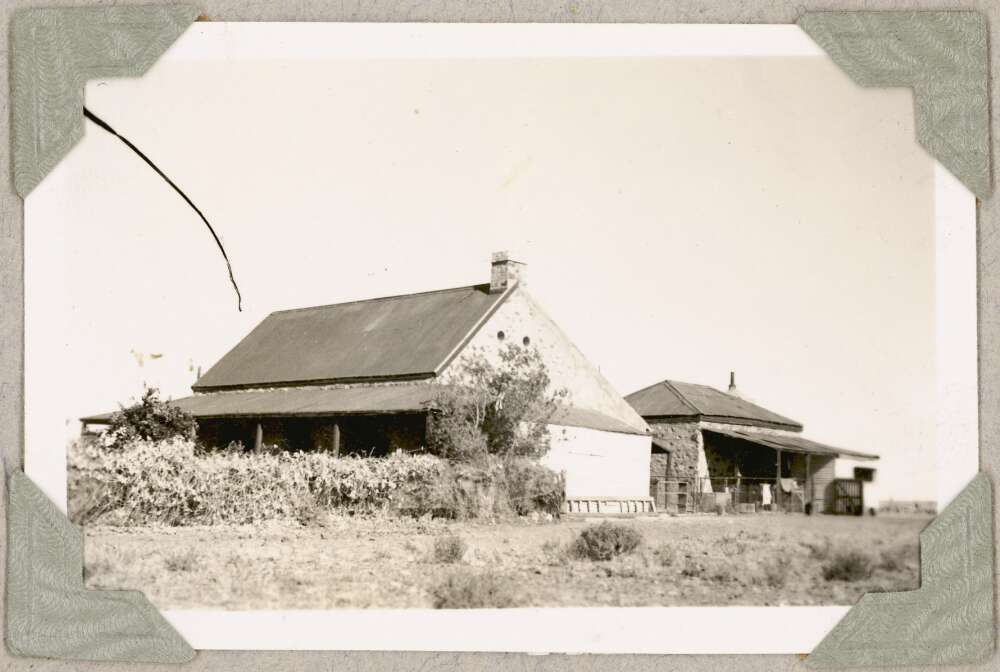
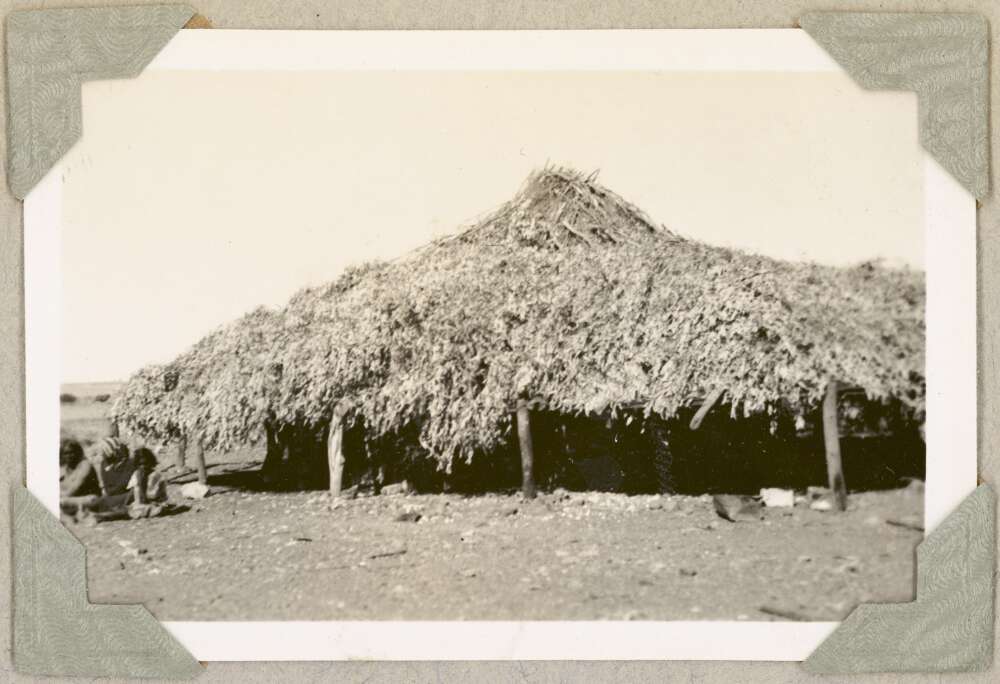
In February 1908 he had Colonel Goad of the Indian army staying with him and took him to some of his stations to see the India horses he bred. He had over 7,000 horses on Norley and Bulla alone in Queensland and branded over 2,000 foals while Col. Goad was there. Kidman expressed his view the best horse country in Australia was between Hergott Springs and the MacDonnell Ranges. The Colonel had proposed a controversial horse buying plan to our government; Kidman was not phased by it.
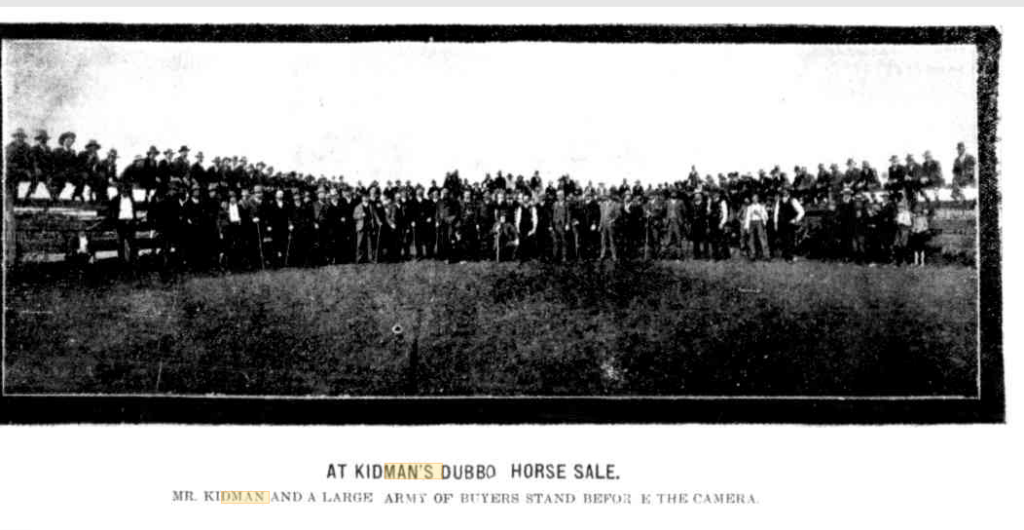
In 1908 he generously gave 100 good horses to the Government of India when there was a relief fund going that many donated to. He paid for the horses to go over too. India after all was the main customer for his horses.
In 1905 he went to a sale of Dangar’s Suffolks in Sydney and bought an expensive colt, this was taken to Eringa Station. Kidman also bought the thoroughbred stallion Lucknow. Lucknow was by Strahan foaled in 1889 – from there his breeding was unknown. He also bought Light Artillery for 150 guineas, and other winning TB stallions such as St Carlo, Sir Simon, St Spasa (a success at stud), Denacre, Inchaquire, Aides and Passing By. Aides was bred in Hungry and cost 3,500 guineas, it stayed on the stud where it died suddenly in 1924. He owned several TB mares of good race lines and bred them to top stallions for racers; his TB stud was called Fulham Park stud. His imported bay horse Silvius won some good races. He put Light Artillery on Coogy station to breed India horses, where it eventually died in 1909. Kidman’s TB bloodlines went through central Australia, S.A., the N.T and Qld. Jim Robb for example bought a lot for Lambinna.
Sid bought the Banzai TB stud at Hilton S.A. when it dispersed and sent the stallion Banzai and some good mares to Norley station in Queensland, retaining other mares for his own stud. Bloodlines of his horses also went to his stations, Passing By (a solid horse) and St Spasa descended mares went to his stations to breed Walers for India, their lines much favoured. He liked racing and was a good sport, pleased when his friends won instead of himself. He lost interest in it eventually, in his later years passing the racing and TB stud to his son and son-in-law.
On Mundowna, usually spelled Mundownda (using old news account spelling) 20 circus ponies/horses, bought when Ireland’s Circus folded up, had been put to breed up. They soon multiplied and were good sorts. Kidman bought the station, ran them in and sold many at Kapunda. They threw to the blue-grey and white colours of the originals. The colour was popular with drovers as they could be seen on nightwatch and were sold around the area. Some went to Kapunda to the sales.
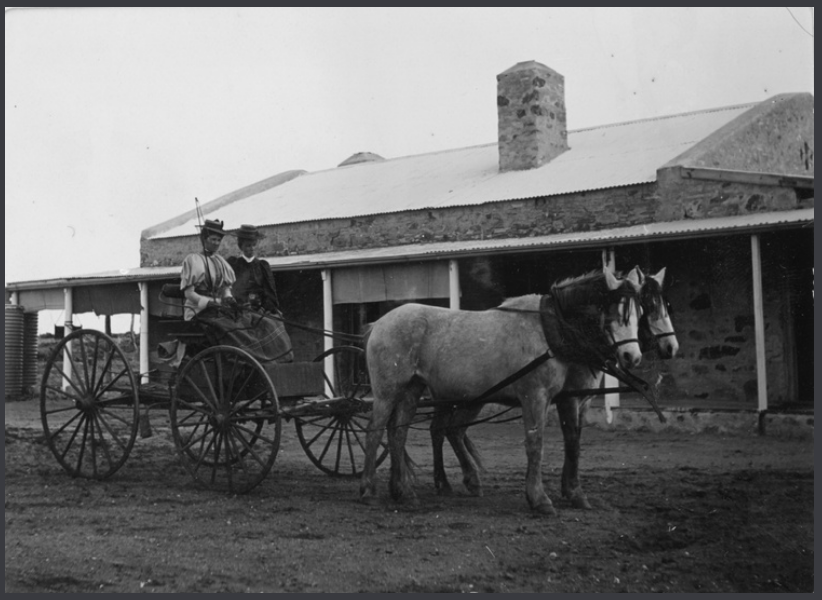
Mundownda was taken up in 1859. As well as sheep and cattle, various owners there bred horses. They didn’t go for Thoroughbreds so much as good utility horses. The blue and white circus horses there were smart and good natured with good bone. When Sir Sid Kidman bought the lease in 1906, he sold a lot of the horses off and got high prices for them, especially the coloured ones.
Horse drawn vehicle, Mundowdna Station. 1898. State Library S.A.
In 1909 he returned from a trip to the UK and the continent, he decried the long working hours and poverty there. He brought back several omnibus drivers as workers, all good horsemen, they’d worked 18 hours a day in England for a pittance. He also brought back 4 Welsh pony stallions and two Thoroughbred stallions, one French; the stallions went to his station.
Kidman was a breeder rather than a direct trader to India. After all he was a busy man. He bred and sold. His horses were bred for that trade and thousands went there. In 1910 for example, Julius Gove – one of the important India traders – went with a shipload of top-class horses to India on the steamship Satara. Gove had bought the horses from Kidman. Countless shiploads where the majority of horses were “Kidman horses” – either bought at Kidman’s sales or directly from him. If Kidman sent his horses directly to India as a licensed trader, he’d have been the biggest trader in Australia. He bred and sold tens of thousands of horses. Many of his horses of course, went to the domestic market.
In 1910 2,400 horses were put through his Kapunda sales, the largest number at a sale in Australia. Excellent prices were obtained.
In August 1914 he gave 200 top class military horses to the Commonwealth Expeditionary Force, as well as 100 frozen bullocks. The horses were from Norley station. He also offered the govt another 1,000 good military horses he’d just mustered in Queensland, for cost. All horses needed breaking. The govt said they wanted the horses broken in and delivered to Sydney, Melbourne or Brisbane or would prefer money instead – so Kidman donated the value of the 1,000 horses for the war effort. He also donated 3 ambulances, 2 fighter planes, wool and more meat. He promised all his workers their jobs back when they returned from war, if injured he gave them a pension, if killed he paid a pension to their widows. He knew what it was like to be a poor child with no father for support. He started a fund for displaced Belgium farmers. And more. He donated to the Salvation Army, Red Cross and Royal Flying Doctor service throughout his life.
In 1919 he said horses were overstocked in much of Central Australia, a friend of his just shot 2,400 there. Horses were trapped, shot and left to rot, Kidman said it was a waste of hundreds of thousands of horses that could be sent as meat to countries like France where they eat horse. Horse numbers needed to be managed. There were several horse sales in Adelaide that year, prices were moderate. Kidman sent over 1,000 horses to several sales that year to reduce his numbers and got fair prices.
Kidman supplied buyers who came directly to him such as Philippines based North American army officers, and our army.
When he moved into Adelaide Sid donated his substantial house at Kapunda (near the Barossa Valley), “Eringa,” to the government for a public high school. The next day he was knighted.
Image: Eringa, looking across a snow covered garden, State Library of South Australia
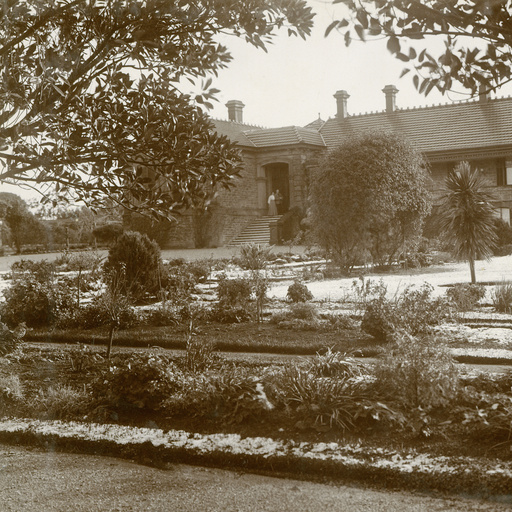
Sir Sidney Kidman died in 1935, leaving a wife, three daughters and a son. A great Australian and wonderful man, who did an immense amount for our horse industry and left a great legacy with his property empire. Sid’s Will is a testament to the man indeed – a long list of many charities left substantial sums and his old employees also left a very generous amount. Millions in today’s money. A toughie, who knew that if you look after the little things, the big things will work; a good man.
Read more information about the general area around Eringa Station here.